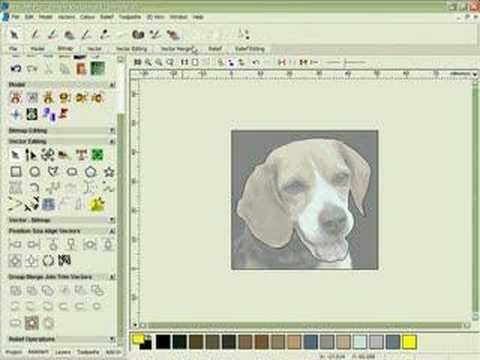Margie,
It can no more make a beginner or inept designer a great one than
you can by giving those same individuals a textbook and set of
carving tools. No matter how advanced the tools they are still
tools and they will require people like you with your artistic
sensibilities and skill to operate them to give quality results.
As James Binnion pointed out, it’s possible to digitally sculpt in
great detail with a CAD program. His reference to the Z-Brush gallery
offers some good examples.
ArtCAM also has that potential and it’s happening right now for some
jewelry designers.
Some examples:
OK, I’ll admit the sound track is sort of ironic 
http://tinyurl.com/4yelx
http://tinyurl.com/5p5ne
I’ve just discovered a demo version of ArtCAM Express.
http://tinyurl.com/4p7p9b
It seems the AC Express demo has drawing tools but doesn’t include
ArtCAM relief tools to make models. It’s intended use is to view some
examples which are also available for download. Just to note, the
working version of AC Express doesn’t have the capability toeasily
making rings, which JewelSmith does quite well.
To expand upon what James said, just as hand carving an exquisite
design takes a certain level of manual dexterity and artistic talent,
digital sculpture also requires skill; the difference being you’re
working with a mouse, a pressure sensitive pen tablet or the full 3d
tactile feedback of a haptic arm device, instead of traditional hand
tools.
Another difference is that if you don’t like what you’ve done in a
CAD program, you can hit “undo” and try a new approach. Working with
a 3D visual representation of a design idea and exploring a myriad of
variations in a relatively short period of time is a great
advantage… you can rotate and view a model on screen from all
angles and perspectives…and wax is cheap.
Say you cut a model on a CNC machine and it turns out that it’s not
exactly what you had in mind. All that’s lost is a few hours of
design and prototyping time, as opposed to using up precious
materials while spending a few days at the bench.
Re: exploring design ideas in a CAD program, the other day I took a
short test based on Howard Gardner’s examination of multiple
intelligences and learning styles.
I scored the highest in Visual and Kinesthetics, meaning I learn and
process nformation best by seeing, moving, doing and touching. So
it’s no wonder I gravitated towards a career that allows me to learn
and work in that manner…I just thought this was an interesting
thing!
As far as enjoying design work in a CAD environment, it may not be
for everyone, but you’d be surprised how addictive it can be once you
experience the creative potential and real-world results.
In the interest of full disclosure, I work with ModelMaster as a
consultant but I use a variety of 3d design programs and find them
all useful to my work and creative process.
Jesse Kaufman
http://jdkjewelry3d.blogspot.com
